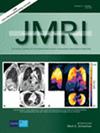Reproducible Radiomics Features from Multi-MRI-Scanner Test–Retest-Study: Influence on Performance and Generalizability of Models
Abstract
Background
Radiomics models trained on data from one center typically show a decline of performance when applied to data from external centers, hindering their introduction into large-scale clinical practice. Current expert recommendations suggest to use only reproducible radiomics features isolated by multiscanner test–retest experiments, which might help to overcome the problem of limited generalizability to external data.
Purpose
To evaluate the influence of using only a subset of robust radiomics features, defined in a prior in vivo multi-MRI-scanner test–retest-study, on the performance and generalizability of radiomics models.
Study Type
Retrospective.
Population
Patients with monoclonal plasma cell disorders. Training set (117 MRIs from center 1); internal test set (42 MRIs from center 1); external test set (143 MRIs from center 2–8).
Field Strength/Sequence
1.5T and 3.0T; T1-weighted turbo spin echo.
Assessment
The task for the radiomics models was to predict plasma cell infiltration, determined by bone marrow biopsy, noninvasively from MRI. Radiomics machine learning models, including linear regressor, support vector regressor (SVR), and random forest regressor (RFR), were trained on data from center 1, using either all radiomics features, or using only reproducible radiomics features. Models were tested on an internal (center 1) and a multicentric external data set (center 2–8).
Statistical Tests
Pearson correlation coefficient r and mean absolute error (MAE) between predicted and actual plasma cell infiltration. Fisher's z-transformation, Wilcoxon signed-rank test, Wilcoxon rank-sum test; significance level P < 0.05.
Results
When using only reproducible features compared with all features, the performance of the SVR on the external test set significantly improved (r = 0.43 vs. r = 0.18 and MAE = 22.6 vs. MAE = 28.2). For the RFR, the performance on the external test set deteriorated when using only reproducible instead of all radiomics features (r = 0.33 vs. r = 0.44, P = 0.29 and MAE = 21.9 vs. MAE = 20.5, P = 0.10).
Conclusion
Using only reproducible radiomics features improves the external performance of some, but not all machine learning models, and did not automatically lead to an improvement of the external performance of the overall best radiomics model.
Level of Evidence
3.
Technical Efficacy
Stage 2.


 求助内容:
求助内容: 应助结果提醒方式:
应助结果提醒方式:


